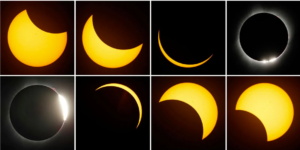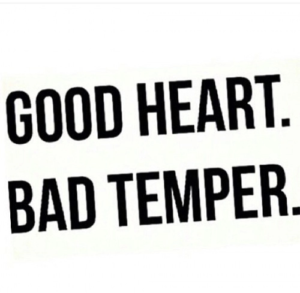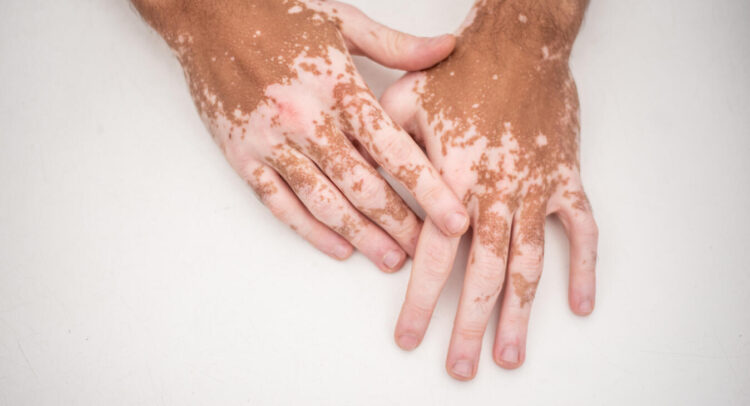Raboyseyee and Ladies,
Don’t Piss Off Your Local Koihen:
Long before Dermatology as a medical term and profession -and a damn good one- the heylige Toirah created the need for this specialty. More on that below.
And here we are. The solar eclipse has come and gone. Those selling protective eyewear will have to wait until the next total solar eclipse which won’t be visible across the contiguous United States again until August 2044. Until then, feel free to store them with a few of your partially used or still brand-new Covid-19 masks.

The bottom lines: Astronomers have eclipses mapped out to the day, minute, and even second, and yet, here in our times, we still have two days of Rosh Chodesh, Pesach, Shovuis, and Sukkis? Yikes! And what time is Shabbis over? The list goes on. And then this shtikel tidbit: Our sages of the heylige Gemora discussed and argued over whether the eclipse was good, bad, or indifferent for the Yiddin. Was it bad luck? According to one opinion, indeed it was. Let’s check out the heylige Gemora (Sukkah 29A) where we find this, ober first a shout out to Rabbi Avi Miller, Associate Rabbi of Beth Sholom here in Lawrence who, in under 7 minutes, quoted all three opinions of the heylige Gemora on this very topic; he is givaldig! One exegesis tells us azoy: A lunar eclipse is a siman ra (bad omen) for the Yiddin as a whole because we count our days by the moon. Another says that a solar eclipse is a siman ra for the whole world, or for the goyim. Which is it? Is it bad for the Jews or bad for the Goyim? Guess what? It’s a machloikes in the heylige Gemora; let us quickly read all three opinions.
תָּנוּ רַבָּנַן: בִּזְמַן שֶׁהַחַמָּה לוֹקָה — סִימָן רַע לְכׇל הָעוֹלָם כּוּלּוֹ.
The Sages taught: When the sun is eclipsed it is a bad omen for the entire world.
תַּנְיָא רַבִּי מֵאִיר אוֹמֵר: כׇּל זְמַן שֶׁמְּאוֹרוֹת לוֹקִין — סִימָן רַע לְשׂוֹנְאֵיהֶם שֶׁל יִשְׂרָאֵל, מִפְּנֵי שֶׁמְּלוּמָּדִין בְּמַכּוֹתֵיהֶן. מָשָׁל לְסוֹפֵר שֶׁבָּא לְבֵית הַסֵּפֶר וּרְצוּעָה בְּיָדוֹ, מִי דּוֹאֵג — מִי שֶׁרָגִיל לִלְקוֹת בְּכׇל יוֹם וָיוֹם הוּא דּוֹאֵג. ……..
It is taught in a baraisa that Rabbi Meir says: When the heavenly lights, i.e., the sun and the moon, are eclipsed, it is a bad omen for the enemies of the Jewish people, which is a euphemism for the Jewish people, because they are experienced in their beatings. Based on past experience, they assume that any calamity that afflicts the world is directed at them.
What’s a baraisa you ask? The answer: A legal or historical document that was not integrated into the Mishneh of Rebbe Yehudah Ha- Nosi, is called a baraisa (“outside”). These pieces were written by rabbinic scholars who lived during the time of the Mishneh. Veyter.
תָּנוּ רַבָּנַן: בִּזְמַן שֶׁהַחַמָּה לוֹקָה — סִימָן רַע לַגּוֹיִם. לְבָנָה לוֹקָה — סִימָן רַע לְשׂוֹנְאֵיהֶם שֶׁל יִשְׂרָאֵל. מִפְּנֵי שֶׁיִּשְׂרָאֵל מוֹנִין לַלְּבָנָה, וְגוֹיִם לַחַמָּה. לוֹקָה בַּמִּזְרָח — סִימָן רַע לְיוֹשְׁבֵי מִזְרָח. בַּמַּעֲרָב — סִימָן רַע לְיוֹשְׁבֵי מַעֲרָב. בְּאֶמְצַע הָרָקִיעַ — סִימָן רַע לְכׇל הָעוֹלָם כּוּלּוֹ.
The Sages taught in another baraisa: When the sun is eclipsed, it is a bad omen for the other nations. When the moon is eclipsed, it is a bad omen for the enemies of the Jewish people. This is due to the fact that the Jewish people calculate their calendar primarily based on the moon, and the other nations calculate based on the sun. When the sun is eclipsed in the east, it is a bad omen for the residents of the lands of the east. When it is eclipsed in the west, it is a bad omen for the residents of the lands of the west. When it is eclipsed in the middle of the sky, it is a bad omen for the entire world.
The bottom lines: whether a solar eclipse is good or bad for the Jews, ver veyst? One thing is zicher: when it’s bad for the goyim, they always blame the Jews and shoin. Next: What we do know is this: Each of the sages quoted above opined on the matter, but not a one thought to warn us of what is universally accepted today: One should not gaze onto the solar eclipse as it’s bad for one’s eyes, even for those who don’t believe in the ayin horo (evil eye). Shoin!
Says Rav Google that looking at the sun — even when it’s partially covered like during an eclipse — can cause eye damage. There is no safe dose of solar ultraviolet rays or infrared radiation, say kimat all references to the solar eclipse. Case closed and eyes wide open only for these who invest in a pair of special protective plastic throwaway eclipse glasses, mad out of plastic of course.

The final bottom line on this topic: In recent days, weeks, and months, it appears that just about everything is bad for the Yiddin: HELP PLEASE! The final word on the eclipse comes from Dovy Wachsler who drove all the way to Ithaca hoping to catch near totality, but left a shtikel disappointed. He posted a video from Ithaca with a life lesson worthy of mention: he only witnessed near totality, but noted that even those who were zoiche (merited) to witness totality, saw some light in the darkness. Shkoiach!
Let’s continue our journey through Sefer Vayikra. The first two parshas were dedicated to korbonis (sacrifices). Last week featured inauguration of the Mishkan and the untimely passing of Nodov and Avihu. And this week? Well, the next two parshas will describe some affliction we call tzora’as and the person who has been afflicted with the tzora’as. He is known as the metzoira. This person is somewhat sick, at least spiritually, and is ritually impure. The good news: this very person -male or female- still got a parsha named for him or herself. Indeed, spiritually impure women were also candidates for tzora’as. More good news: Tzora’as -when around and mor eon that below- was only temporary. Veyter.
What is tzora’as? Who gets it? What does it look like? Is it contagious? Who diagnoses the tzora’as? Who and what distinguishes it from stam azoy a rash, acne, or some other skin affliction? Is tzora’as indeed a form of acne? The bottom line: We have asked and answered all these questions in the past 14 years, ober this year, the heylige Ois is happy to introduce a few new twists on a disease that seems to have disappeared thousands of years before the rotary phone. What’s pshat disappeared? Seemingly tzora’as was only active when the Beis Hamikdash stood. That was a long time ago.
As it turns out, our sages were quite baffled by the words describing this affliction and given the scarcity of words in the heylige Toirah which left us guessing why it came upon people, and specifically what it was, they went to town with full license to describe the different images they conjured up in their minds. What is it? Who gets it? Who examines it? Who is certified or appointed to declare one to be spiritually diseases as a result of his/her physical appearance? Is there a prescription drug one can get from a local dermatologist? Why do certain people get it? For answers to most of these questions, the Ois refers you to archives over at Oisvorfer.com, ober let’s move on to other questions and some answers.
After reading this parsha over the years along with many commentaries, the Ois is happy to report the following: kimat all our sages agree that ritual impurity, or tumah, has nothing to do with being “unclean” physically. It sure does look like a physical ailment but don’t be fooled. Tzora’as was a spiritual state that prevented one from entering into holy areas. The skin afflictions -discussed at length in our parsha and next- are not biological diseases. They are not a form or leprosy! Oib azoy (if that’s the case), what the hec is it or they? Tzora’as is seemingly a physical manifestation of a spiritual or ritual problem and the person with the problem is called a metzoira. Is there tzora’as in our times? Not! no tzora’as but tzuris we have aplenty and may the RBSO do something about them very soon as in today please.
Ober, when tzora’as, as a form of punishment or wakeup call, was active, who got it? Why? Says the heylige Gemora (Eyrchin 15) that these afflictions were a penalty for people who have spoken ill of their fellow man (or woman). By speaking ill, of course we are talking about loshon horo -evil gossip- and if we are, it’s of course easy to chap how busy these koihanim were 24/6 running around diagnosing and decreeing tzora’as all over the place. Let’s get real: people bad mouth and speak ill of one another at least once daily. In shul, more often. Ober, how do we know that tzora’as is connected to loshoin horo? Shoin, over the summer as we read Parshas Ki Say-tzei, the heylige Toirah warns us to be careful with respect to the laws of tzora’as and immediately thereafter to remember Miriam’s punishment in the desert for speaking loshoin horo about her brother Moishe. Miriam was immediately afflicted with tzora’as and forced to leave the encampment for seven days. And if Miriam was smitten by tzora’as, it stands to reason that all who became afflicted, were guilty of loshoin horo. Givaldig! Any other opinions? Of course!
Says the medrish, (Tanchuma Tazria 11) that tzora’as was a punishment for illicit sex and tells us that this is also what happened in Jerusalem whose inhabitants were struck by this disease because their sexual mores had deteriorated so much (Isaiah 3,16) ”because the daughters of Zion are so vain and walk with their heads thrown back, with roving eyes, and with mincing gait, making a tingling with their feet…who can argue otherwise? Shoin, another large group of individuals who required house calls and a diagnostician. Veyter, and let us move on to some new information the heylige Ois dug up this year.

Would the heylige Toirah not tell us otherwise, one might have been inclined to call one’s local dermatologist for some cream or ointment. And taka before Botox and others skin tightening -pick your poison- remedies, taka, that’s just what dermatologist prescribed for many years.

Ober, the heylige Toirah tells that the afflicted person is to approach the local koihen (a priest) only; only he can and will decide on its status depending on its exact appearance. Let’s read the posik innaveynig. Says the heylige Toirah Vayikro 13:3-4, azoy:
ויקרא יג:ג וְרָאָה הַכֹּהֵן אֶת־הַנֶּגַע בְּעוֹר־הַבָּשָׂר וְשֵׂעָר בַּנֶּגַע הָפַךְ לָבָן וּמַרְאֵה הַנֶּגַע עָמֹק מֵעוֹר בְּשָׂרוֹ נֶגַע צָרַעַת הוּא וְרָאָהוּ הַכֹּהֵן וְטִמֵּא אֹתוֹ. יג:ד וְאִם־בַּהֶרֶת לְבָנָה הִוא בְּעוֹר בְּשָׂרוֹ וְעָמֹק אֵין־מַרְאֶהָ מִן־הָעוֹר וּשְׂעָרָה לֹא־הָפַךְ לָבָן וְהִסְגִּיר הַכֹּהֵן אֶת־הַנֶּגַע שִׁבְעַת יָמִים.
The priest shall examine the affection on the skin of his body: if hair in the affected patch has turned white and the affection appears to be deeper than the skin of his body, it is tzora’as; when the priest sees it, he shall pronounce him unclean. 13:4 But if it is a white discoloration on the skin of his body which does not appear to be deeper than the skin and the hair in it has not turned white, the priest shall isolate the affected person for seven days.
Let us also read this surprise diagnosis; a shtikel perplexing it is indeed. What happens if all the person’s skin turns entirely white and scaley, with no healthy skin left? Counterintuitively, the heylige Toirah tells us mamish befeirush (in the text itself) that such a person is considered pure:
ויקרא יג:יב וְאִם־פָּרוֹחַ תִּפְרַח הַצָּרַעַת בָּעוֹר וְכִסְּתָה הַצָּרַעַת אֵת כָּל־עוֹר הַנֶּגַע מֵרֹאשׁוֹ וְעַד־רַגְלָיו לְכָל־מַרְאֵה עֵינֵי הַכֹּהֵן. יג:יג וְרָאָה הַכֹּהֵן וְהִנֵּה כִסְּתָה הַצָּרַעַת אֶת־כָּל־בְּשָׂרוֹ וְטִהַר אֶת־הַנָּגַע כֻּלּוֹ הָפַךְ לָבָן טָהוֹר הוּא.
But if the tzora’as breaks out over the skin so that it covers all of the skin of the affected person, from head to foot, as far as the priest can see. 13:13 If the priest sees that the tzora’as has covered the whole body, he shall pronounce the affected person pure; because he has turned all white, he is pure.
And one last surprise: What happens if some of this person’s skin turns back to normal? Again counterintuitively, the text says such a person should be declared impure:
ויקרא יג:יד וּבְיוֹם הֵרָאוֹת בּוֹ בָּשָׂר חַי יִטְמָא. יג:טו וְרָאָה הַכֹּהֵן אֶת־הַבָּשָׂר הַחַי וְטִמְּאוֹ הַבָּשָׂר הַחַי טָמֵא הוּא צָרַעַת הוּא.
But as soon as raw flesh appears in it, he shall be impure. 13:15 When the priest sees the raw flesh, he shall pronounce him impure. The raw flesh is impure; it is tzora’as. And just to confuse us a bit more, let’s read one more case: What happens if the healthy-looking flesh again turns white:
ויקרא יג:טז אוֹ כִי יָשׁוּב הַבָּשָׂר הַחַי וְנֶהְפַּךְ לְלָבָן וּבָא אֶל־הַכֹּהֵן. יג:יז וְרָאָהוּ הַכֹּהֵן וְהִנֵּה נֶהְפַּךְ הַנֶּגַע לְלָבָן וְטִהַר הַכֹּהֵן אֶת־הַנֶּגַע טָהוֹר הוּא.
If the raw flesh again turns white, he shall come to the priest. 13:17 and the priest shall examine him; and, if the affection has turned white, then the priest shall pronounce the affected person pure; he is pure.
The bottom line: if you’re confused, you are not alone, veyter. One question you might ask is this: Why was the koihen who would otherwise be busy managing the myriad korbonis (sacrifices) also be charged with making house calls to those with skin eruptions? Why was he charged with diagnosing the hair and skin color of the afflicted? Was this job assigned to those koihanim who were off duty in the Beis Hamikdash? Were they being paid for house calls? Or, is pshat that the kohanim, aside from their official duties in the Beis Hamikdash -and how many were actually on duty at one time per shift? Were there no other temple related job assignments? The fact: They taka didn’t work for a living and were readily available. As an aside, this last pshat is but the Ois’s theory, ober, go prove otherwise since the RBSO never told us why He davka wanted them for the job.
The bottom line: the heylige Toirah -as we read above- states mamish bifeirush (explicitly) that only a koihen (a priest), a descendent of Aharoin, the Koihen Godol (High Priest) was authorized to diagnose a tzora’as and pronounce the malady as such. So much so that even in a case where all the symptoms of the illness were clearly present and a multitude of scholars recognized it as tzora’as, the person could not be diagnosed as possessing this malady unless a koihen so stated explicitly. Wait, there’s more: Says the Rambam that the ramifications of this biblical law are far-reaching. For example, even if the only koihen present was blind so that he was unable to examine the person in question, a trustworthy scholar needed to report his findings to the blind koihen, and only the koihen could pronounce the white-patched person as impure. Wow! There’s even more: Even if the only koihen around was a child, lacking the knowledge and understanding required to give a diagnosis, it is only he who was entitled to make the verbal pronouncement under the instruction and guidance of an adult-scholar. Shtark!
Mistama you’re curious to find out why a blind koihen or a child-koihen without knowledge would outrank the scholar who is intricately familiar with the symptoms of this malady. Says the heylige Zohar that the reason the kohanim were designated to be the conduits for Divine blessings is because their souls evolve from the celestial chamber of love, granting them a unique ability to cultivate compassion and kindness toward others and hence making them uniquely suitable conduits for the RBSO’s love and grace and because the koihen is so filled with love and compassion, only he may diagnose another human being as suffering from an illness that renders him or her severely impure and requires them to separate from the community. So gishmak! But true?
What? The kohanim are loving and peaceful? Hello! The heylige Gemora (Kiddushin 70b) states mamish farkert: “If you see a koihen who is arrogant, be assured that his lineage is genuine, as it is written (Hoshea 4:4), ‘Your nation is argumentative like a koihen’.” Thus Hashem said, “Pinchas has demonstrated by his anger at Zimri that he is a genuine descendant of Aharoin.” Soon enough, we will be reading how enraged Pinchas became when he witnessed Cozbi and Zimri having sex in public. Keep your pants one; we have previously covered this story; more than once. Wait, there’s more: Another Gemora (Buba Basra 160b) tell us the following: “Kohanim are bad-tempered.” On the other hand, says the Maharal that this is so because the “fire of holiness” burns within them and causes them to “boil.” Ober argues R’ Yoinoson Eyebschitz azoy: Kohanim are meant to be kind-hearted people, just as their ancestor Aharoin was known as a “lover of peace and pursuer of peace.” However, so great is the strength of the forces of impurity which have overtaken us that the very things which are potentially the most holy in fact have become the most profane. This goes so far that the heylige Gemora records instances of kohanim killing each other in the Temple courtyard while arguing over who would perform certain Temple services. (Ya’aros D’vash I, No. 1). Mild mannered, preach loving Kohanim killing each other in the courtyard over narishkeyt (BS)? Say it’s not so please but history teaches otherwise. Or: Because kohanim are by nature kind-hearted, their kindness must be balanced by bad-temper, lest they carry kindness to absurd extremes. As mentioned above, chesed perverted leads to immorality and adultery [Vayikra 20:17], precisely the sin of Zimri. Because Pinchas saved the day by exhibiting anger and opposing the perversion of chesed, he merited to become a koihen, his temperament was perfect for the job. And these not so mild mannered kohanim were exclusively selected by the RBSO to do inspections and diagnoses? What’s pshat?

On the other hand, who else but the koihen? Would a person ever self-diagnose and declare himself impure? Not! One can only imagine the ginormous number of tzora’as declarations were anyone -including wives, friends, neighbors and business partners, allowed to declare each other impure, yikes! Would people not use the tzora’as label as a weapon for personal gain or revenge? You bet! An angry wife? Watch out!
Let’s get real: It’s hard to be objective about someone’s problems if your life is bound up in theirs. We lose objectivity and are too quick to judge. And the final bottom line: We likely shouldn’t judge the spiritual, physical, or moral condition of another person; more often than not, we don’t have all the facts. Do we know what trauma this person has experienced? We might declare another person outside the box or camp, because of their behavior or appearance, but we might be seeing only the outside appearances. Typically, there is a whole lot more we don’t know.
A gittin Shabbis!
The Heylige Oisvorfer Ruv
Yitz Grossman
